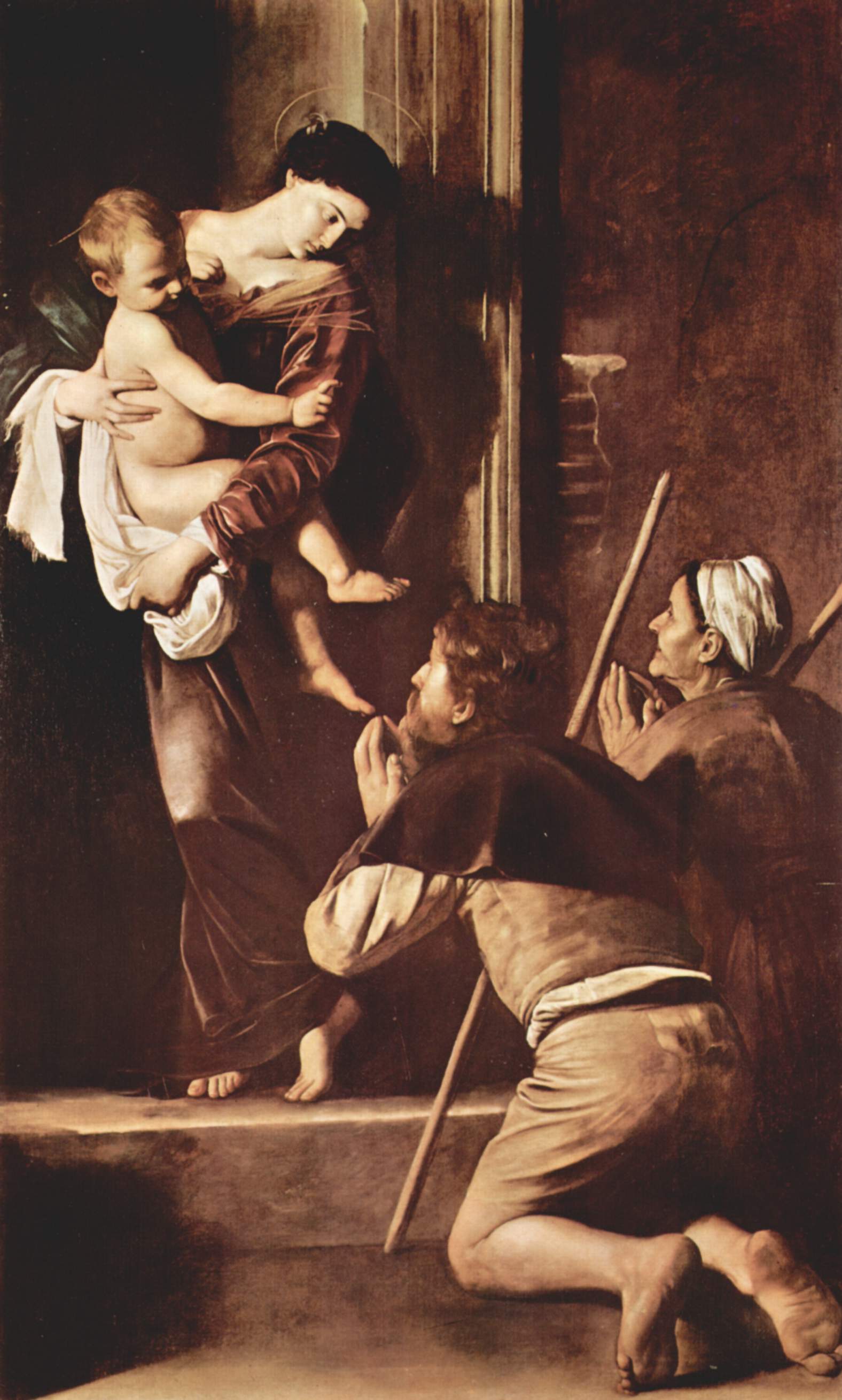- Madonna di Loreto (Caravaggio)
Infobox Painting|

title=Madonna di Loreto
artist=Caravaggio
year=c. 1604-1606
type=Oil on canvas
height=260
width=150
city=Rome
museum=Sant'AgostinoThe "Madonna di Loreto" (in "Italian", "Madonna dei Pellegrini" or pilgrims) is a famous painting (1604-1606) by the Italian Baroque master
Caravaggio , located in theCavalletti Chapel of the church of Sant'Agostino, near thePiazza Navona inRome . It depicts the apparition of the barefoot virgin and naked child to two peasants on a pilgrimage; or as some say it is the quickening of the iconic statue of the Virgin. [http://www.wga.hu/frames-e.html?/html/c/caravagg/07/42loreto.html]In
1603 the heirs of oneErmete Cavalletti commissioned for the decoration of the family chapel with a painting on the theme of this icon.Giovanni Baglione , a competing painter of lesser talent, but who had successfully obtained Caravaggio's jailing during a libel trial, said that the unveiling of this painting "caused the common people to make a great cackle ("schiamazzo") over it". The uproar was not surprising. The Virgin Mary, like her admiring pilgrims, is barefoot. The doorway or niche is not an exalted cumulus or bevy of putti, but a partly decrepit wall of flaking brick is visible. Only the merest halo sanctifies her and the baby. While beautiful, the Virgin Mary could be any woman, emerging from the night shadows. Like many of Caravaggio's Roman paintings, such as the "Conversion on the Way to Damascus " or the "Calling of St Matthew", the scene is a moment where everyday common man (or woman) encounters the divine, whose appearance is also not unlike that of a common man (or woman). The woman modelling Mary appears to be the same as that in the canvas in theGalleria Borghese : "The Madonna and Child with St. Anne (Dei Palafrenieri)" (1605).References
*cite book|last=Hibbard|first=Howard|authorlink=Howard Hibbard|title=Caravaggio|year=1983|publisher= Harper & Row
Wikimedia Foundation. 2010.
